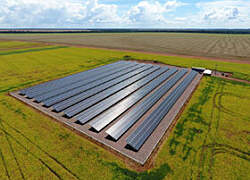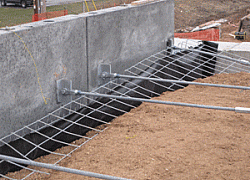
Solar
Hot-dip galvanized steel's maintenance-free durability and sustainability shine as a perfect complement to renewable generation of solar energy.
Solar energy has been harnessed by humans since ancient time, though in the 21st century it has seen the most significant growth and technological advancement. According to the Solar Energy Industries Association (SEIA), solar capacity in the US was only 1 gigawatt (GW) in 2004, but had reached 100 GW by the end of 2020.
Overall, solar energy accounts for 3.4% of total electricity generation. Although not a huge number, it has risen from 1% in 2014 - so tripled in less than 10 years. Approximately 67% of installed solar projects are utility-scale, but in recent years smaller solar installations on rooftops, etc. have been gowing significantly.
Regardless if they are large or small scale arrays, solar energy infrastructure is soaked in the sun meaning constant exposure to UV rays and often extreme heat. Both the UV light and temperature can be detrimental to some materials rendering them unfit for use in solar racking and support systems. In addition to these extreme conditions, solar infrastructure is often installed in remote or difficult to access locations. Without easy access or visual on these systems, it is critical to select low maintenance, durable materials such as hot-dip galvanized steel.
A big reason solar energy is growing exponentially is the abundance in availability as well as it's sustainability. The focus on growing renewable energy generation is to power our world in a more sustainable (less carbon heavy) way. Therefore, it makes sense to construct solar energy infastructure with the most sustainable materials available.
Hot-dip galvanized steel, which is made from abundant, natural materials (iron and zinc) that are 100% recylable at the end of life, provides solar racking and support systems maintenance-free corrosion protection for decades - often longer than the design life of the solar panels. Similar to guardrail in the highway market, this opens up a tremendous opportunity to reuse existing posts and mounting systems allowing money to be spent on replacing panels and improving technology rather than maintaining or replacing the supporting structures.
Solar Components
Absorber Plates/Frames |
Clamps |
Control Boxes |
Grounding Components |
Mounting Structures |
Mounting Fasteners |
Panel Supports |
Piping |
Racking Systems |
Rails |
Storage Tanks |
Tracker Systems |







